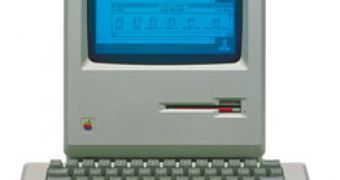This week, the Macintosh celebrated its 25th anniversary. The Macintosh was the first successful personal computer to feature a mouse and a graphical user interface, GUI.
Following a personality conflict between Jef Raskin and Steve Jobs, the final Mac design was self-contained and had the complete QuickDraw picture language and interpreter in 64 Kb of ROM. It had 128 KB of RAM, in the form of sixteen 64 kilobit (Kb) RAM chips soldered to the logicboard, expandable to 256 Kb RAM. The computer's screen was a 9-inch, 512x342 pixel monochrome display. The final Macintosh design is said to be closer to Jobs’ ideas than Raskin’s.
One of the most memorable moments in the creation of the first Macintosh was when Jobs paid the folks at Xerox a visit to negotiate using their GUI technology, where he traded stock options in exchange for insight to the Xerox Alto computer and Smalltalk development tools. The Lisa and Macintosh user interfaces were partially influenced by technology seen at Xerox PARC and were combined with the Macintosh group's own ideas. The "Snow White" design language resulted from Jobs commissioning industrial designer Hartmut Esslinger to work on the Macintosh line.
Apple spent more than US$2.5 million to buy all 39 of the advertising pages in a special post-election edition of Newsweek in November 1984 to advertise the Macintosh. Apple also ran a “Test Drive a Macintosh” promotion, which allowed potential buyers (with a credit card) to take home a Macintosh for 24 hours and return it to a dealer afterwards. The campaign was unsuccessful, prompting CEO John Sculley to raise the price from US$1,995 to US$2,495.
However, the most popular Macintosh advertisement has to be the famous 1984 commercial. Ridley Scott's television commercial, most notably aired during the third quarter of Super Bowl XVIII on 22 January 1984, is now considered a “masterpiece.” You can watch it below.
1984 Apple's Macintosh Commercial (YouTube)

 14 DAY TRIAL //
14 DAY TRIAL //